Earwax plays a vital role in protecting your ears. It traps dust, debris, and bacteria, preventing them from entering the inner ear. But when wax builds up excessively, it can cause discomfort and even affect your hearing. While over-the-counter ear drops may help in mild cases, they aren’t always the solution. In many situations, the safest and most effective option is to visit a specialist.
Microsuction is a modern, clinically safe technique used to remove earwax using a small suction device. Unlike ear syringing, it’s a dry procedure, performed under direct vision using a microscope or a high-powered loupe—making it safer and more accurate.
Here are 5 important signs that it’s time to skip the drops and book an appointment with a qualified specialist.
1. You Have Persistent Hearing Loss or Muffled Sound
If you’re finding it hard to hear conversations clearly, turning the volume up more than usual, or experiencing muffled sounds, this may be due to compacted earwax. Often, people confuse this with age-related hearing loss, when in fact it’s simply blocked ears.
Why Drops May Not Work:
Ear drops can soften wax but might not dislodge it, especially if the wax is dry, impacted, or stuck deep within the canal.
Why Microsuction Helps:
A microsuction specialist can immediately remove the blockage, often restoring hearing within minutes during a single session.
2. You Feel Pressure, Fullness, or Pain in Your Ears
A sense of pressure in the ears, similar to what you might feel on a plane or during a cold, can signal that wax is pressing against the eardrum. In more severe cases, it can lead to pain, vertigo, or even infections.
Why You Shouldn’t Wait:
Trying to clean your ears with cotton buds or home kits can push the wax deeper, causing more damage or even perforating the eardrum.
Specialist Tip:
Microsuction is gentle and non-invasive. It doesn’t involve water, reducing the risk of infection or trauma, especially important for people with narrow or sensitive ear canals.
3. You’ve Used Drops for Days and Nothing’s Changed
Ear drops like olive oil or hydrogen peroxide-based solutions can be helpful, but only to a certain point. If your symptoms haven’t improved after 3–5 days of treatment, the wax may be too stubborn or too far down to be removed without professional help.
Common Signs Drops Aren’t Working:
- Hearing remains muffled
- You feel a ‘sloshing’ sensation
- Your ear feels worse after using the drops
Microsuction Advantage:
A microsuction specialist can remove hard, sticky, or deep wax safely, often without needing any drops beforehand. That means quicker results and fewer delays.
4. You Wear Hearing Aids or Use Earphones Frequently
Wax can build up faster in people who wear hearing aids or use earphones daily. This can:
- Causes whistling or feedback in your hearing aid
- Block sound output
- Create moisture and irritation in the canal
Their specialists are trained to clean around devices delicately, ensuring your hearing technology works properly and your ear canals stay healthy.
Pro Tip:
Regular microsuction—every 6 to 12 months—can help maintain device performance and prevent discomfort for hearing aid users.
5. You Have a History of Ear Conditions or Surgery
If you have a perforated eardrum, chronic infections, or have had ear surgery (e.g., grommet insertion), you should avoid traditional water-based syringing or home kits.
Why Microsuction Is the Best Choice:
- It’s dry, reducing the risk of infections
- It’s performed under direct vision, ensuring precise removal
- It’s safe for medically sensitive ears, especially under clinical supervision
Health Alert:
People with diabetes or weakened immune systems should also avoid self-treatment and seek professional care due to a higher risk of complications.
Conclusion
Ear drops have their place, but they’re not a one-size-fits-all solution. If you’ve noticed persistent symptoms, discomfort, or hearing problems, it’s time to seek expert help. A microsuction specialist provides accurate diagnosis, gentle treatment, and fast relief, restoring comfort and clarity in just one session.




